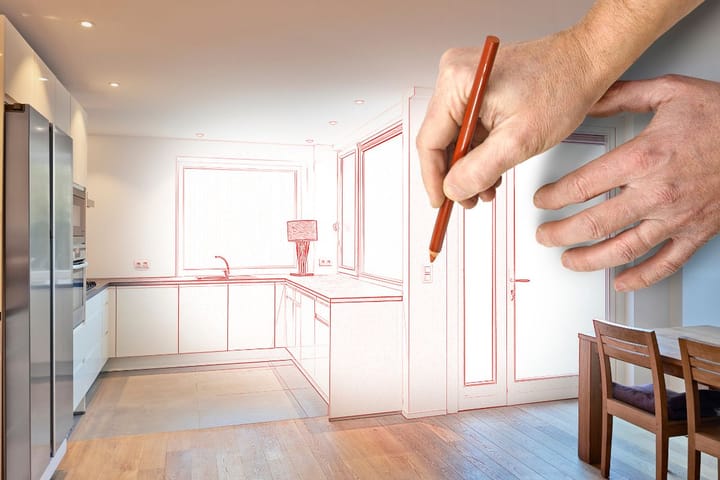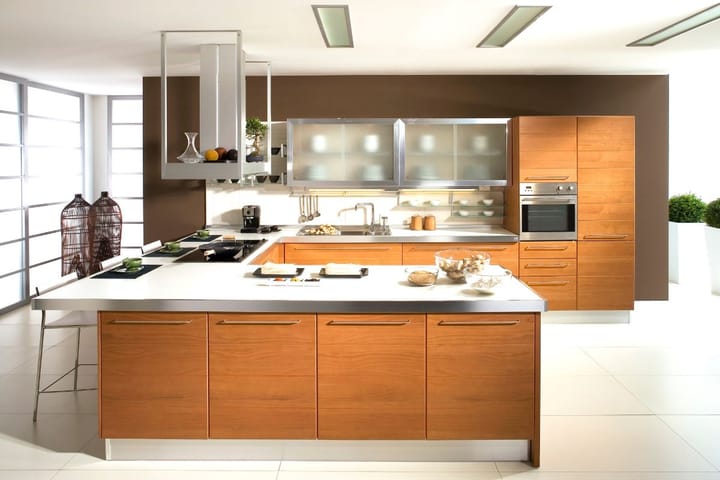6 Benefits of 3D Rendering for Property Development
Stay ahead in property development with 3D rendering—transforming plans into stunning visuals for better marketing and project communication.

Introduction
In the ever-evolving world of property development, it's crucial to stay above the competition.
The ability to visualize, communicate, and market your project effectively can make all the difference. This is where the power of 3D rendering comes into play.
With 3D rendering technology, property developers can bring their visions to life in stunning detail.
Let’s explore the 6 benefits of 3D rendering for property development.
A Cost-Effective Solution for Design Flaws
Even the best 3D rendering companies understand that mistakes are bound to happen during the early stages of project design. Correcting these initial flaws can take up a considerable amount of time and resources.
Thankfully, 3D rendering significantly speeds up this process and allows you to make changes without spending money on physical prototype testing or extensive mock-up designs to view flaws.
With digital rendering tools, it's easier and faster to make changes and adjustments, which means there's less need for major rework while building.
Thanks to this economical method, developers may adjust their ideas more quickly and precisely. This significantly lowers the possibility of costly changes being made during the building stage.
Consequently, the project's overall efficiency and success are enhanced by the preservation of significant time and financial resources.
Advanced Visuals and Immersive Experiences
3D rendering and its transformative power have become an integral part of property development by providing a sneak peek and enhanced visualization of a project’s future.
In contrast to conventional 2D drawings, which occasionally allow for ambiguity, 3D rendering provides an infinite number of three-dimensional options.
3D rendering allows you to take a visual walkthrough and bring your architectural plans to life before it’s built. It provides you with a realistic representation that can be viewed by potential investors, architects, and other developers.
The combination of the minute details, the way light and shadow play, and the sense of scale make for a fantastic visual experience. The lifelike representation of materials can also provide a preliminary estimate of the property's maintenance expenses.
And the beauty of this enhanced visualization doesn't stop at aesthetics. It permeates every facet of the project.
It streamlines decision-making, from meticulous design tweaks to layout optimizations. 3D rendering is your guiding star, smoothing down the development process and increasing confidence at every step.
Seamless Communication
In the property development industry, where collaboration is essential, 3D rendering becomes a vital tool for clear and effective communication.
Effective communication is a cornerstone for the success of a development company and 3D rendering plays a pivotal role in this.
These well-constructed 3D visualizations serve as a foundation for communication and foster a shared understanding of facilitating in-depth discussions.
3D rendering leaves zero room for ambiguity. It allows stakeholders, architects, developmental experts, and builders to communicate effectively with high precision.
These visualizations make it easier to showcase and communicate complex architectural details and meticulous design adjustments.
In the end, this alignment increases the project's efficiency and success by lowering the possibility of misunderstandings and misinterpretations.
Streamlining Permit Acquisition
Many property developers typically get lost in a mountain of documentation when it comes to acquiring permits. This can lead to a significantly slower acquisition of financing.
One of the trickiest aspects of the development cycle can be obtaining the right finance for your property. Technical reports cluttered with jargon can be a tough task for financiers to make sense of.
This is where 3D rendering comes into play. It significantly expedites this entire process by preventing misunderstandings and conveying a clear intent of the property design.
It allows developers to effectively express their ideas to authorities, property associations, and other stakeholders by putting together well-thought-out and visually appealing project proposals.
This clear presentation and well-constructed visual proposals often lead to faster approvals and permits, accelerating the development timeline.
Provides Realism
Visualizing property designs from 2D drawings can be challenging due to their inherent lack of realism.
The benefit of 3D rendering is that it incorporates light as one of its main components, along with a combination of various textures and building materials.
This combination can create a realistic picture of what the project can look like upon completion before a single brick is laid.
What truly distinguishes these 3D renders is the remarkable quality they offer.
The level of detail and precision is so remarkable that they are nearly indistinguishable from high-definition photographs. They bridging the gap between conceptual design and reality with astounding realism.
Elevating Property Marketing
Effective marketing is an integral part of property development, especially, when it comes to its success.
In addition to providing 3D constructions, rendering can also aid property developers in the realm of marketing and advertising.
Realistic 3D designs serve as invaluable marketing tools that developers can utilize to create visually appealing promotional materials.
These designs find versatile applications in brochures, websites, and presentations, enabling developers to showcase the project's true-to-life appearance upon completion.
This skill improves marketing efforts by garnering more attention and potentially expediting the sales process.
Conclusion
Moreover, these marketing tools bring substantial cost savings, eliminating the need for additional expenses related to physical showrooms or the construction of model units for in-person viewings. This not only curtails upfront expenditures but also widens the scope of global marketing outreach.




Comments ()